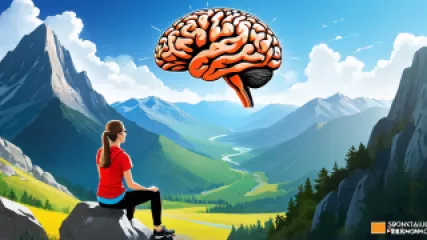10 Top Cognitive Flexibility Tools to Boost Adaptability
10 Top Cognitive Flexibility Tools to Boost Adaptability
In today's fast-paced and ever-changing world, the ability to adapt and think flexibly is more important than ever. Cognitive flexibility, the capacity to shift our thinking and adjust our behavior in response to new circumstances, is a crucial skill that can help us navigate the complexities of modern life. Whether it's dealing with unexpected challenges at work, navigating personal relationships, or tackling complex problems, cognitive flexibility allows us to approach situations with an open mind, generate innovative solutions, and thrive in the face of adversity.
In this comprehensive list, we'll explore 10 powerful cognitive flexibility tools that can help you boost your adaptability, sharpen your problem-solving skills, and unlock your full potential. From brain-stimulating exercises to mindfulness practices and cutting-edge apps, these tools can be easily incorporated into your daily routine, empowering you to become more resilient, creative, and mentally agile.
1. Dual N-Back Training
Dual N-Back is a cognitive training exercise that challenges your working memory and cognitive flexibility. The task involves remembering the location and identity of a series of stimuli (such as letters or sounds) presented in a grid, and then indicating whether the current stimulus matches the one presented n steps back. As the game progresses, the value of n increases, forcing your brain to work harder to keep track of the constantly changing information. This exercise has been shown to improve fluid intelligence, the ability to think abstractly and solve novel problems.
To engage in Dual N-Back training, you can find various online and mobile applications that offer this exercise, such as Dual N-Back by Hannes Görtz or Memory Trainer by Brainbow. Commit to regular practice, starting with a lower n value and gradually increasing the difficulty as you become more comfortable with the task.
2. Mindfulness Meditation
Mindfulness meditation is a powerful practice that can enhance cognitive flexibility by improving our ability to focus, reduce mental distractions, and adapt to changing circumstances. By cultivating present-moment awareness and acceptance, mindfulness helps us break free from habitual thought patterns and respond to situations with greater clarity and flexibility.
Incorporating a regular mindfulness meditation routine into your daily life can have profound effects on your cognitive flexibility. Start with just a few minutes of meditation per day, focusing on your breath or a simple mantra. Over time, gradually increase the duration of your practice, and consider exploring different mindfulness techniques, such as body scans or loving-kindness meditation.
3. Improv Classes
Participating in improv acting classes can be an unexpected and highly effective way to develop cognitive flexibility. Improv, or improvisational theater, requires performers to think on their feet, respond spontaneously to prompts, and collaborate with partners to create scenes in the moment. This dynamic process challenges your brain to constantly adapt, generate new ideas, and think outside the box.
By engaging in improv exercises, you'll learn to let go of preconceived notions, embrace uncertainty, and develop the ability to quickly generate and execute creative solutions. This can translate directly to your personal and professional life, helping you become more adaptable, innovative, and confident in your ability to navigate unexpected situations.
4. Cognitive Flexibility Training Apps
In recent years, a growing number of mobile apps and online platforms have been developed specifically to train and enhance cognitive flexibility. These brain-stimulating tools often incorporate a variety of exercises, games, and puzzles designed to challenge your ability to shift between different concepts, think divergently, and adapt to changing conditions.
Some popular cognitive flexibility training apps include Lumosity, Peak, and CogniFit. These platforms offer a range of activities that target various cognitive skills, including attention, memory, problem-solving, and cognitive flexibility. Commit to regular practice with these apps, and track your progress over time to measure the impact on your adaptability and problem-solving abilities.
5. Outdoor Adventures
Stepping outside your comfort zone and engaging in outdoor activities can be a highly effective way to boost cognitive flexibility. Navigating unfamiliar environments, problem-solving in real-time, and adapting to changing weather conditions and challenges can all contribute to the development of your mental agility.
Consider trying activities such as hiking, rock climbing, kayaking, or even simply exploring a new park or hiking trail. These experiences require you to stay present, make quick decisions, and adjust your approach as circumstances evolve. By pushing the boundaries of your comfort zone and embracing the unpredictable nature of the great outdoors, you can strengthen your cognitive flexibility and become more resilient in the face of life's curveballs.
6. Brain Teasers and Puzzles
Engaging in brain teasers, puzzles, and other cognitively challenging activities can be a fun and effective way to develop cognitive flexibility. These types of mental exercises require you to think creatively, shift between different perspectives, and explore multiple solutions to a problem.
You can find a wide variety of brain teasers and puzzles online, in books, or through mobile apps. Some popular options include Sudoku, Crosswords, Jigsaw Puzzles, and Logic Puzzles. Set aside time each day to tackle a new challenge, and don't be afraid to try different types of puzzles to keep your brain engaged and adaptable.
7. Role-Playing and Perspective-Taking
Stepping into the shoes of others and exploring different perspectives can be a powerful way to enhance cognitive flexibility. Role-playing exercises, whether in a professional setting or in your personal life, can challenge you to consider alternative viewpoints, empathize with different experiences, and adapt your behavior accordingly.
Try engaging in role-playing activities with friends, colleagues, or family members. Assign each person a different character or perspective, and encourage everyone to fully immerse themselves in their roles. This exercise can help you develop a more nuanced understanding of diverse viewpoints, improve your communication skills, and strengthen your ability to adapt to changing social and interpersonal dynamics.
8. Lifelong Learning
Embracing a mindset of lifelong learning can be a powerful way to boost your cognitive flexibility. Continually challenging yourself with new skills, knowledge, and experiences can help keep your brain agile and adaptable.
Consider taking classes, learning a new language, exploring a new hobby, or delving into a subject that's outside your comfort zone. By exposing yourself to novel information and activities, you'll be training your brain to think flexibly, make connections, and adapt to new situations. This pursuit of knowledge and personal growth can have a profound impact on your cognitive flexibility and overall mental well-being.
9. Creative Writing Exercises
Engaging in creative writing exercises can be a highly effective way to enhance cognitive flexibility. The process of generating original ideas, crafting compelling narratives, and exploring different perspectives requires the brain to think divergently, make unexpected connections, and adapt to the evolving creative process.
Try your hand at short stories, poetry, or even journaling. Experiment with different writing prompts, genres, and narrative structures to challenge your creative thinking. You can also collaborate with others on writing projects, which can further expand your cognitive flexibility by requiring you to consider alternative viewpoints and adapt your writing style accordingly.
10. Strategic Board Games
Playing strategic board games can be a fun and engaging way to develop cognitive flexibility. These types of games often require players to think several steps ahead, anticipate their opponents' moves, and adapt their strategies in response to changing circumstances.
Some examples of strategic board games that can enhance cognitive flexibility include Chess, Go, Settlers of Catan, and Pandemic. As you navigate the evolving game dynamics, you'll be challenged to think flexibly, consider multiple scenarios, and make quick decisions to outmaneuver your opponents. Engaging in regular strategic game play can help strengthen your problem-solving skills, improve your ability to think divergently, and foster a more adaptable mindset.
By incorporating these 10 powerful cognitive flexibility tools into your daily life, you can unlock your full potential, become more resilient in the face of change, and thrive in an increasingly complex world. Remember, the key to developing cognitive flexibility is consistent practice and a willingness to step outside your comfort zone. Embrace the challenges, stay open-minded, and watch as your adaptability, problem-solving skills, and overall mental agility reach new heights.






